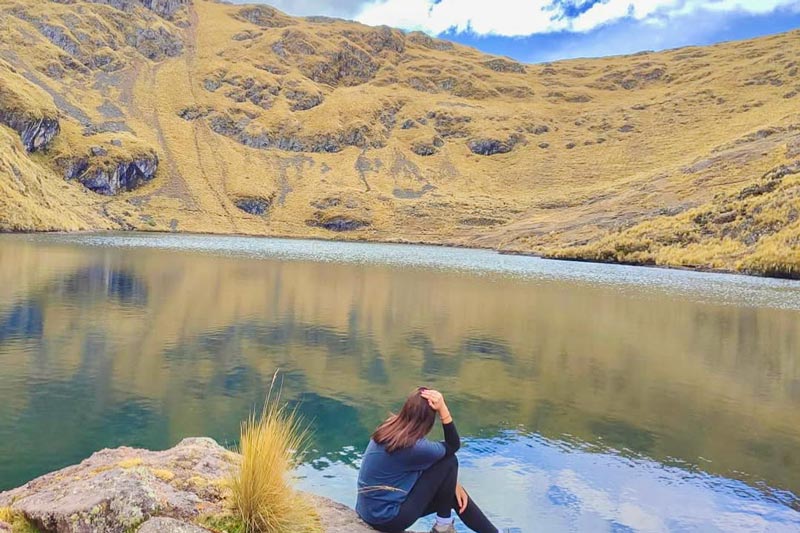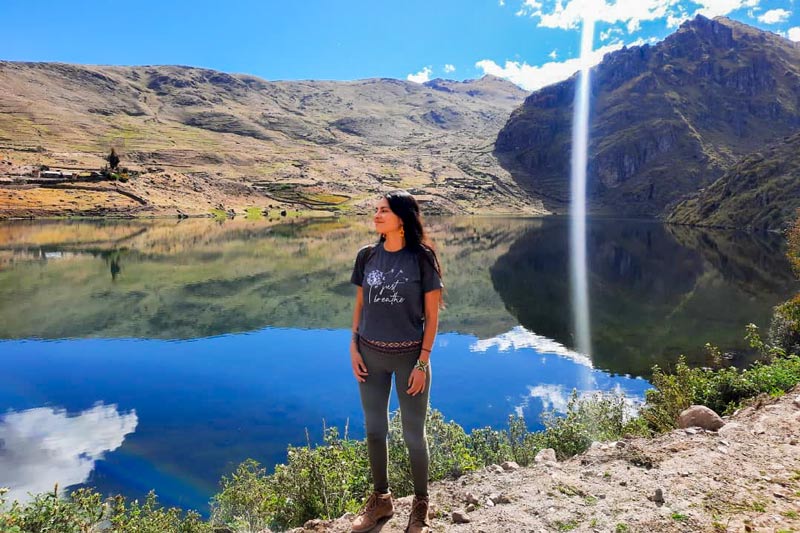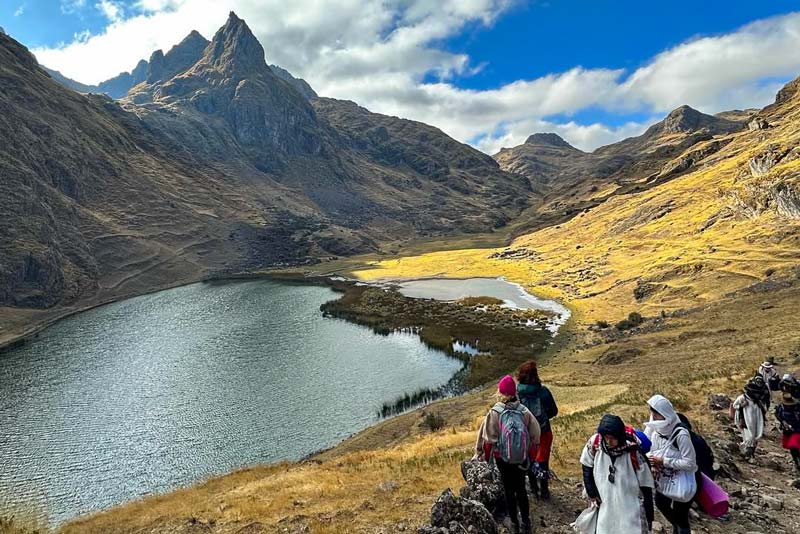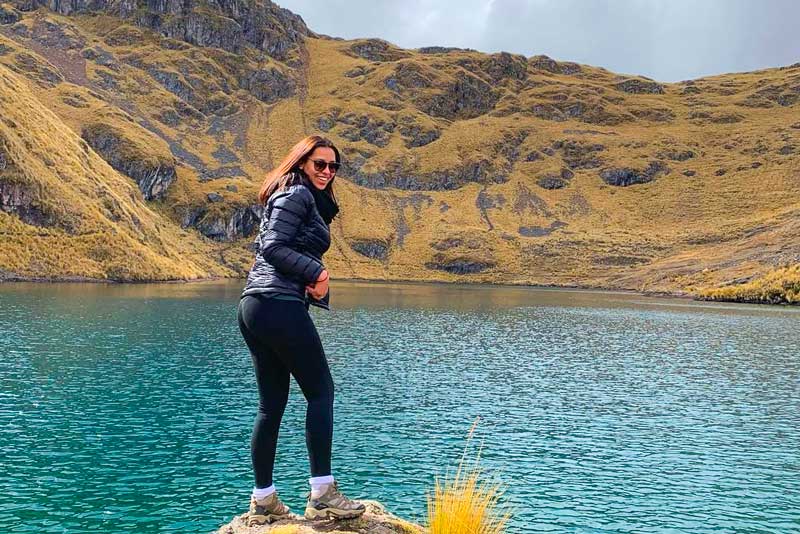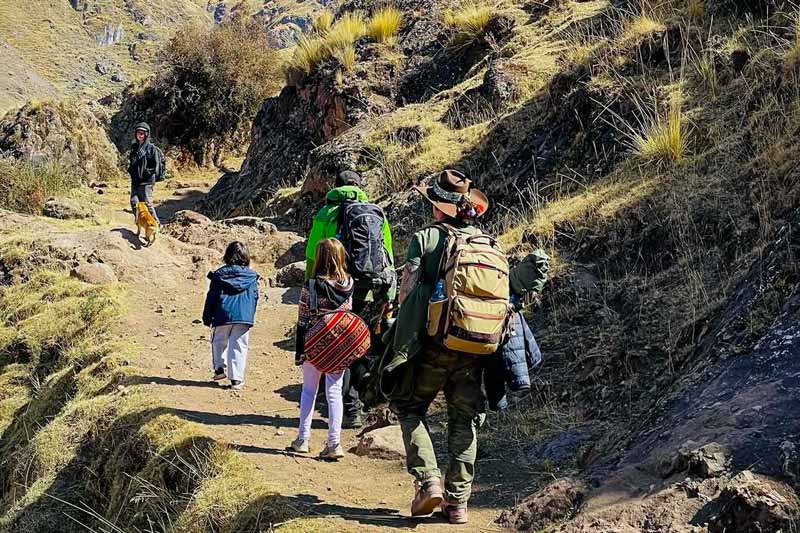Discovering the hidden lagoons of Pisac in Cusco
Cusco is famous for its impressive archaeological sites and Andean landscapes, but beyond the most popular tourist destinations, there are magical places that few know. Near Pisac, in the Sacred Valley of the Incas, there are three lagoons that capture the essence of nature and Andean culture: Puma Cocha, Kinsa Cocha, and Azul Cocha. These lagoons, surrounded by mountains and traditions, are perfect for those seeking an authentic experience away from mass tourism.
- What will I find at Puma Cocha, Kinsa Cocha, and Azul Cocha lagoons?
- How to visit the three lagoons?
- Comparison: Puma Cocha, Kinsa Cocha, and Azul Cocha Lagoons
- Recommendations
- Frequently Asked Questions
Unlike other more popular tourist destinations in Cusco, such as Machu Picchu or the Sacred Valley, the lagoons of Puma Cocha, Kinsa Cocha, and Azul Cocha are relatively unknown to most tourists. This allows for a more peaceful and personal experience, away from large crowds. If you’re looking for peace, solitude, and the opportunity to connect directly with nature, this is an ideal place.
What will I find at Puma Cocha, Kinsa Cocha, and Azul Cocha lagoons?
Puma Cocha Lagoon
- Description: Puma Cocha is a lagoon with crystal-clear waters that reflect the Andean sky, creating a serene and mystical landscape. Its name, meaning “puma lagoon” in Quechua, honors the sacred animal of the Incas, a symbol of strength, wisdom, and connection with the earth.
- Location: It is located a few kilometers from the town of Pisac, in a high area surrounded by mountains and typical Andean vegetation. Access requires a moderate walk, adding an adventurous touch to the visit.
- Cultural Significance: According to local legends, Puma Cocha was a sacred place for the Incas, where rituals and offerings to the Andean gods were performed. Today, local communities maintain these traditions, holding ceremonies on special dates such as Inti Raymi or the winter solstice.
- Attractions:
- Landscape: The natural surroundings are breathtaking, with panoramic views of the mountains and the Sacred Valley.
- Tranquility: Being a lesser-known location, it is perfect for those seeking to disconnect and enjoy nature in silence.
- Photography: The crystal-clear waters and sky reflection make this place a paradise for photography lovers.
- How to get there: From Pisac, you can take local transportation or hike for about 3.5 hours, enjoying the Andean landscape along the way.
Kinsa Cocha Lagoon
- Description: Kinsa Cocha, meaning “three lagoons” in Quechua, is a set of small bodies of water located in a remote area near Pisac. Each of the lagoons has a unique charm, surrounded by Andean vegetation and imposing mountains.
- Location: It is located in a high area, about 3 hours of hiking from Pisac. The journey itself is an experience, with spectacular views of the Sacred Valley and its surroundings. (Sacred Valley Travel Guide in Peru)
- Cultural Significance: These lagoons were considered sacred by the Incas, who associated them with fertility and abundance. Today, local communities protect them as part of their natural and cultural heritage.
- Attractions:
- Hiking: The trail to Kinsa Cocha is perfect for hiking enthusiasts, with routes that pass through varied landscapes full of life.
- Biodiversity: The lagoons are home to various bird species, such as Andean ducks and high-altitude seagulls, as well as native flora like ichu (Andean grass) and queñuales.
- Landscape: The three lagoons, each with a different size and shape, offer a unique visual spectacle, especially at dawn or dusk.
- How to get there: From Pisac, you can hire a guide or embark on a hike. It is recommended to bring warm clothing and supplies, as there are no tourist services in the area.
Azul Cocha Lagoon
- Description: Azul Cocha, meaning “blue lagoon” in Quechua, is a magical place known for the intense blue color of its waters, which contrasts with the green vegetation and the gray of the surrounding mountains.
- Location: It is located in a high and remote area, about 3 hours of hiking from Pisac. The access is more challenging, but the reward is a dreamlike landscape.
- Cultural Significance: Azul Cocha was considered a place of purification and spiritual connection by the Incas. According to local beliefs, its waters have healing and energetic properties.
- Attractions:
- Water Color: The intense blue hue of the lagoon is its main attraction, created by the reflection of light on the minerals in the bottom.
- Adventure: The trail to Azul Cocha is ideal for adventure enthusiasts, with routes that include crossing rivers, climbing mountains, and walking through Andean forests.
- Tranquility: Being a less-visited location, it is perfect for those seeking peace and connection with nature.
- How to get there: It is recommended to hire a guide, as the path can be difficult to find. It is essential to bring suitable walking gear, as well as water and food.
How to visit the three lagoons?
Visiting the three lagoons (Puma Cocha, Kinsa Cocha, and Azul Cocha) near Pisac is a fascinating experience that combines nature, culture, and adventure. Here is a detailed guide on how to plan your visit to these hidden gems.
1. Prior planning
- Best time to visit: The dry season (April to October) is ideal, as the trails are in better condition and the weather is more stable. During the rainy season (November to March), the trails can be slippery, and access may be more difficult.
- Duration of the trip: Visiting the three lagoons can take an entire day, so it is recommended to start early.
- Guide: Hiring a guide is highly recommended, especially if you are not familiar with the area. Guides will not only help you find your way, but also share stories and traditions of the region.
- Required equipment:
- Warm clothing (temperatures can drop, especially at night).
- Sturdy footwear for walking.
- Backpack with water and light snacks.
- Sunscreen, sunglasses, and a hat.
- Camera or phone to capture the landscapes.
- Trekking poles (optional but useful for uneven terrain).
2. Full walk from Pisac to the three lagoons
- From Pisac to Kinsa Cocha:
- Distance: 10 km walk.
- Walking time: Approximately 4.5 hours.
- Description: This is the longest stretch, with moderately steep terrain. It is a route that requires time and effort, with beautiful landscapes along the way.
- From Kinsa Cocha to Azul Cocha:
- Distance: 2 km walk.
- Walking time: Approximately 40-50 minutes.
- Description: The stretch between these two lagoons is short and relatively accessible, but still moderately steep.
- From Azul Cocha to Puma Cocha:
- Distance: 1.5 km walk.
- Walking time: Approximately 20-30 minutes.
- Description: This is the last stretch, short and pleasant, with a slight incline to the last lagoon.
- Total walking time: Approximately 5.5 to 6 hours to walk the three lagoons from Pisac.
- From Pisac to Kinsa Cocha:
3. By car to Kinsa Cocha and then walking through the lagoons
- From Pisac to Kinsa Cocha by car:
- Distance: Around 16 km.
- Car travel time: Approximately 1.5 hours.
- Description: You can take a vehicle to get close to Kinsa Cocha Lagoon. This stretch is much faster and less exhausting than walking the entire route.
- Walk from Kinsa Cocha to the other two lagoons:
- From Kinsa Cocha to Azul Cocha: Approximately 40-50 minutes walking.
- From Azul Cocha to Puma Cocha: Approximately 20-30 minutes walking.
- Total walking time (from Kinsa Cocha): Approximately 2 hours to walk through Azul Cocha and Puma Cocha after arriving by car close to Kinsa Cocha.
- From Pisac to Kinsa Cocha by car:
Comparison: Puma Cocha, Kinsa Cocha, and Azul Cocha Lagoons
| Characteristic | Puma Cocha | Kinsa Cocha | Azul Cocha |
|---|---|---|---|
| Location | In the same area as Pisac, part of the Sacred Valley. | Near Puma Cocha, in the same area. | Adjacent to Puma Cocha and Kinsa Cocha. |
| Altitude | Approximately 4,200 meters above sea level. | Approximately 4,100 meters above sea level. | Approximately 4,100 meters above sea level. |
| Size | Small lagoon with spectacular views. | The largest of the three. | Smaller, but equally attractive. |
| Accessibility | Accessible via rural walks and trails. | Accessible by similar routes, near other lagoons. | Similar to the other two, also by rural roads. |
| Walking time | Approximately 5.5 hours. | Approximately 4.5 hours. | Approximately 5 hours. |
| Recommended activities | Leisurely walks, landscape photography. | Walking, photography, wildlife watching. | Relaxed walks, nature observation. |
The area surrounding the lagoons is strongly influenced by Andean traditions. The nearby villages still preserve many of their ancestral customs, and the natural landscape is considered sacred by the local communities. Visiting the lagoons offers a unique opportunity to connect with the cultural roots of the region and experience the spirituality of nature, something highly valued in the Andean worldview.
Recommendations
- Acclimatization: Make sure to spend at least 1 or 2 days in Pisac or the city of Cusco to acclimate to the altitude and avoid altitude sickness.
- Appropriate clothing: Bring lightweight and comfortable clothing for the walks, as well as a jacket or coat for the chilly afternoons.
- Appropriate footwear: Wear hiking boots or comfortable, sturdy shoes for walking on steep and rocky terrain.
- Sunscreen: The sun at high altitudes can be intense, so bring high SPF sunscreen and apply it regularly.
- Water and snacks: Bring enough water to stay hydrated throughout the trip, as well as some energy snacks (like nuts or protein bars).
- Camera equipment: Don’t forget your camera or mobile phone to capture the stunning landscapes of the lagoons and the natural surroundings.
- Map or guide: If you’re walking between the lagoons, it’s recommended to bring a map or hire a guide to ensure you don’t get lost.
- Respect for nature: Keep the area clean, don’t leave trash, and respect local regulations to preserve the environment.
- Walking time: Keep in mind the walking times (4.5 hours to Kinsa Cocha, and more time to reach the other lagoons), and plan your trip ahead of time.
- Car alternative: If you’d rather avoid long walks, you can drive close to Kinsa Cocha Lagoon and then walk between the three lagoons.
- Avoid the rainy season: The rainy season is from December to March. The weather during these months can make the trails more difficult and slippery. It’s best to visit between April and October.
Frequently Asked Questions
1) How do I get to the lagoons from Pisac?
From Pisac, you can reach the lagoons by foot or by car. If you decide to walk, the estimated time to get to Kinsa Cocha is 4.5 hours. You can also take a car transport to Kinsa Cocha, which will take about 1.5 hours, and then walk between the three lagoons.
2) What type of terrain is there on the route?
The terrain is uneven and steep in some parts. Be sure to wear proper footwear for long and challenging walks. Some sections may be slippery, especially during the rainy season.
3) Is it necessary to hire a guide?
Although the route is relatively easy to follow, it is recommended to hire a guide if you’re not familiar with the area. A guide can provide information about the local history and culture, as well as ensure you don’t get lost during the trip.
4) How long does the walk between the three lagoons take?
The total walking time between the three lagoons, depending on your pace, can take between 6 to 7 hours. The walk from Pisac to Kinsa Cocha is approximately 4.5 hours, and then you can walk between the other lagoons in about 1.5 to 2 hours.
5) Can I visit the lagoons during the rainy season?
Although it is possible to visit the lagoons during the rainy season (from December to March), it is recommended to avoid this period due to unstable weather conditions that can make the trails more difficult and slippery. The best time to visit is between April and October.
6) Can I camp near the lagoons?
There are no official camping areas near the lagoons, but if you’re interested in camping, it is possible to do so in some areas, always respecting local regulations and keeping the area clean. Check with guides or authorities for more information.
7) Is it safe to visit the lagoons?
Yes, the area is generally safe for visitors. However, it is always recommended to travel in groups or with a guide, especially if you’re not familiar with the area. It’s also important to be prepared for any weather changes and to take precautions when walking on uneven terrain.
8) What can I do at the lagoons besides walking?
In addition to enjoying the walks, you can practice photography, birdwatching, and enjoy the landscape. You can also take advantage of the tranquility of the place to meditate or simply relax.
9) How much does it cost to enter the lagoons?
Currently, there is no official entrance fee for the lagoons.
Advice from people who have been there
 By: Luis S.
By: Luis S.“My hike to Kinsa Cocha Lagoon“
“Upon arrival, I was struck by the stillness of the water, which perfectly reflected the surrounding mountains. The peace of the place, accompanied by the natural beauty of the surroundings, made me feel as if I were in a space away from the world.“
By Ticket Machu Picchu – Last updated, February 3, 2025
